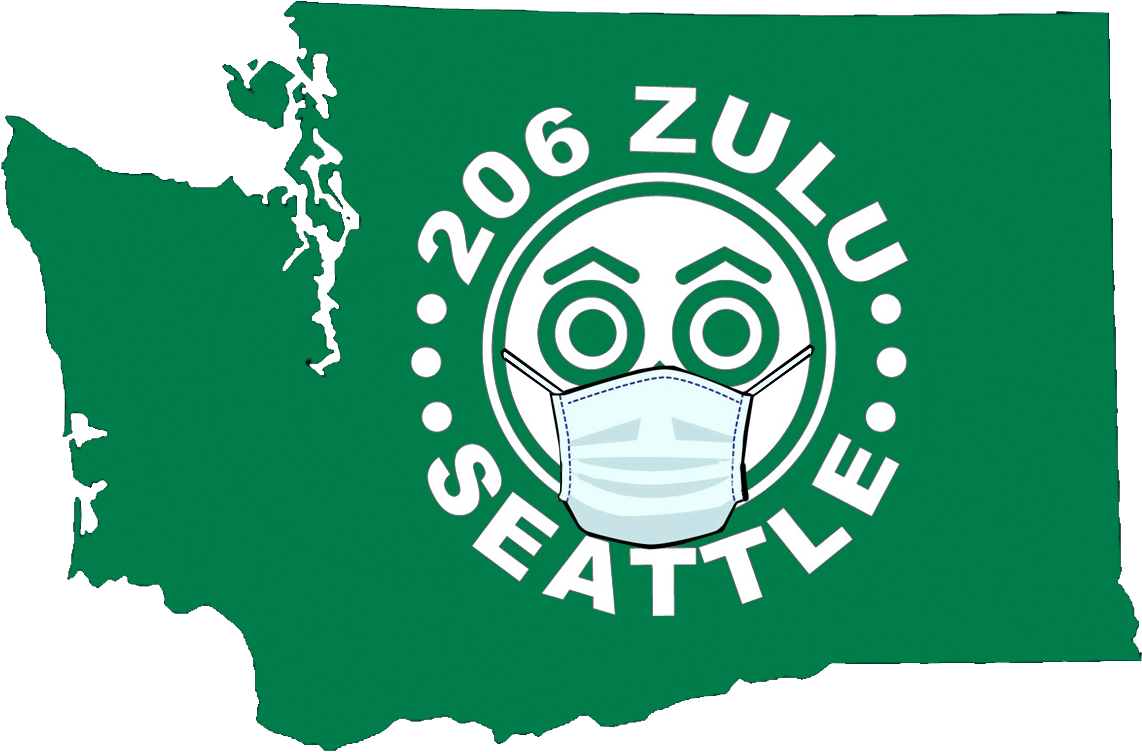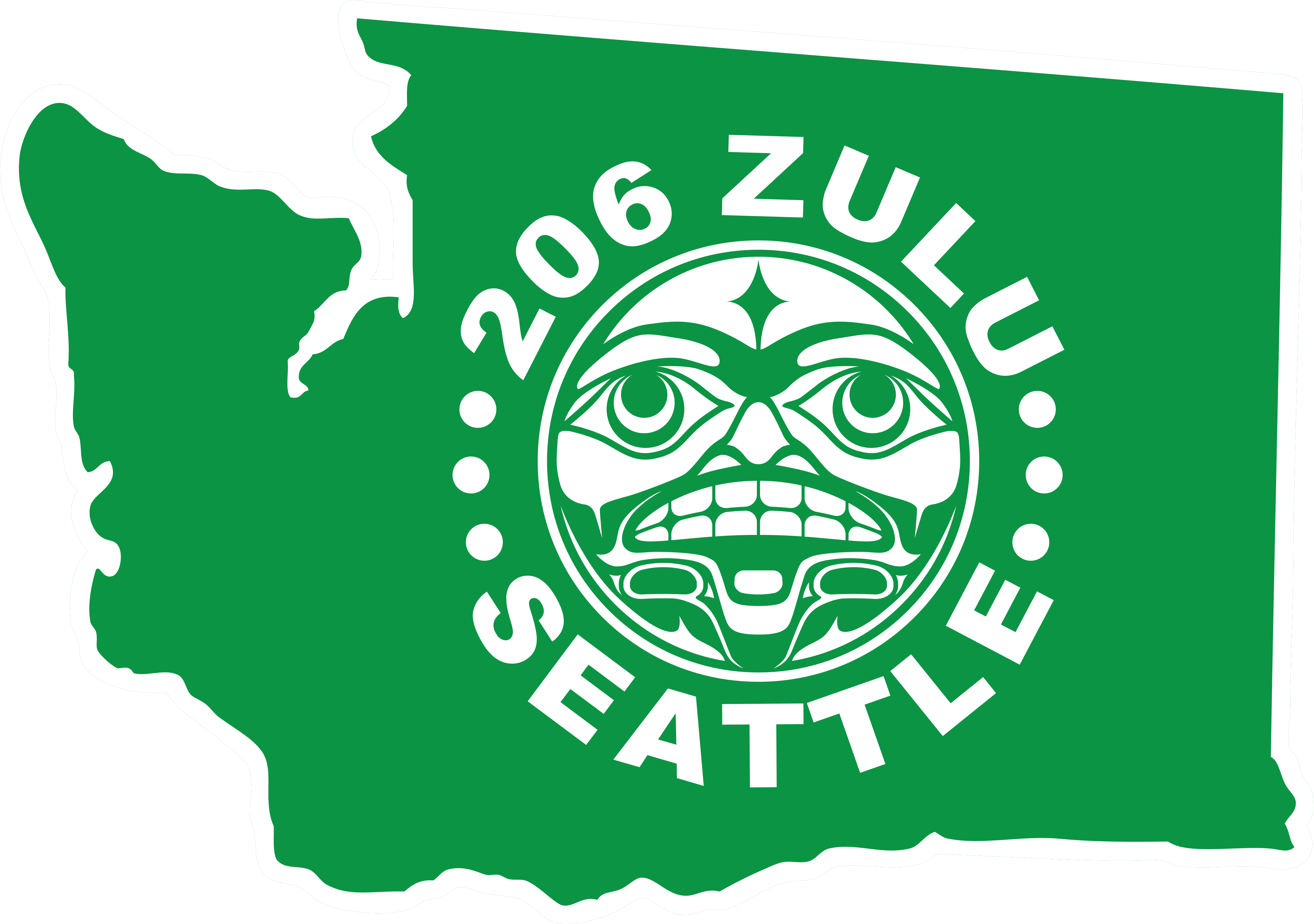Andy Ryder, the Mayor of Lacey, Washington spent some formative years around DJ Luvva J, holding him in high regard as far back as when they were classmates at North Thurston High School. “He’s been a long time sort of hero of mine. You know, someone I’ve admired for ever and ever…” the Mayor reflected when asked why he’s put so much work into honoring Luvva J’s legacy. Jose Salvador Gutierrez Jr. aka DJ Luvva J, a prominent DJ and organizer in the larger Hip Hop community, passed away from COVID-19 complications Friday, November 5, 2021 in Lacey, Washington, where he was a resident. His work in life and the impact he left behind continue to be felt in Lacey and in many different cities he touched on his travels through the world. Among the multitude of examples of those impacts, another instance is when Ryder also signed a proclamation that Jose proposed to the city council, declaring November Hip Hop History Month in Lacey. It was one of his first proclamations as mayor.
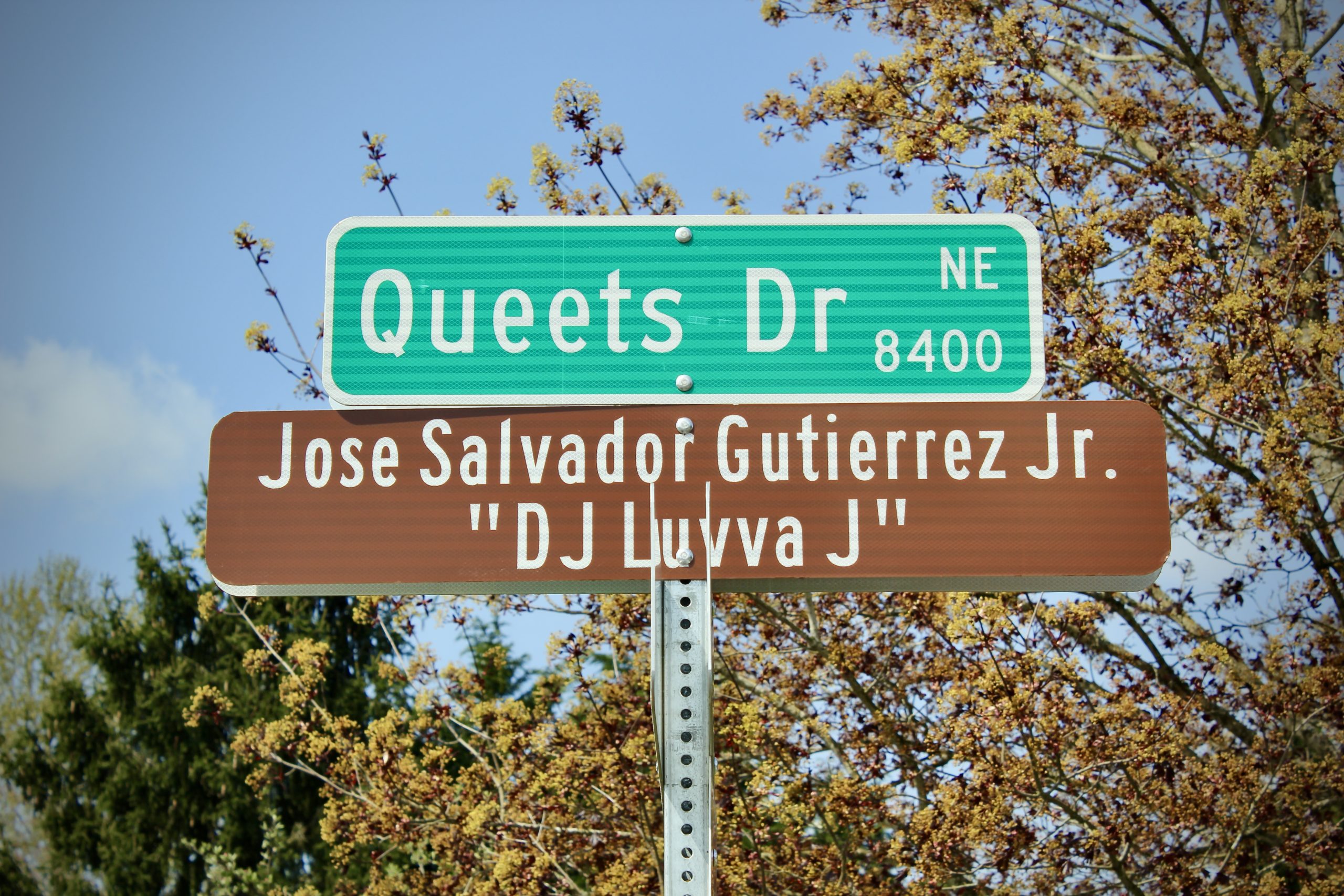
We spoke to Mayor Ryder about the recent adding of Luvva J’s name to a street sign on Queets Drive, Jose’s most recent home in the City of Lacey. “It was an interesting situation” says Ryder, “because that area is in our Lacey urban growth area but it’s still considered county, so the City of Lacey isn’t in direct control of what happens [there]. The Thurston County board of commissioners is the governing body, so we had to sort of go across our lines… and reach out to the county and say you know we really want to do this, what can we do to make it happen?”
This story is an appropriate nod to the way Luvva J lived his life. He was a bridge between so many people, communities, and institutions. Mayor Ryder continues, “Luckily, they knew Jose and some of his backstory. Actually, we offered to make the sign and install it ourselves. I didn’t find out until later that the county said, ‘You know what, we’ll install it on our own.’ Something so little can take forever. In this circumstance, it happened really quick and with full support. So that does tell you what Jose meant to this community.”
We speak about what someone like DJ Luvva J meant to the communities that he dedicated his life to, but the story of Luvva J also tells us about the world he was working to create and the ways that Hip Hop helped to create him.
Hip Hop culture has had a complex and winding journey through private and public life in its short 40-something year existence. Before it was an ubiquitous part of international art, language, and style, it was something more exclusive. In the 70’s, Hip Hop in its infancy was creating new formulae, crafted from the elements of cultures crammed together in the South Bronx and mixed with the creativity of the youth that were innovating fresh new styles of dance, dress, music, and visual art. Organizations like the Zulu Nation were formed to protect the integrity of Hip Hop, a foresight that indicates that the from its inception, the founders had an awareness of the culture’s potential for mass appeal.
The pathway from grassroots cultural expression to a preeminent milieu-shaping force in the world isn’t just a testament to the power of the art forms, it’s also an indication of the movement of resistance undertaken by people like Luvva J. Taking a walk back through the years of Hip Hop working to push its art out into the world, to create an economy for its products, we’ll see a greatly varied landscape of public acceptance. What the founders of the culture knew from the beginning was that many of the institutions of their environment would build distinct barriers to slow its progress.

In May of 2021, New York City Mayor, Bill de Blasio spoke at the groundbreaking of the Universal Hip Hop Museum in the South Bronx. “1982, I was trying to make sense of the world as a young man. I was trying to find my purpose. And you hear a lot of things, and some things influence you powerfully. So, I heard these words – ‘a child is born with no state of mind, blind to the ways of mankind.’ And it gripped me. It gripped me. And I listened to The Message over and over.” In 2021, it was en vogue to quote Melle Mel and acknowledge the impact Hip Hop has had on your idea of what it means to be part of a society.
In 1982, when The Message, the song Mayor de Blasio was quoting, was released, the New York City government had a much different relationship with Hip Hop. The mayor of New York City at that time was Ed Koch and in 1982, he was recording the infamous interview that appeared in the film Style Wars, where he explains his pitch to combat graffiti by releasing wild wolves into the city train yards that he had already militarized with armed guards, attack dogs, and razor wire fences. In 1983, Michael Stewart was arrested by New York transit police, accused of writing on an East Village subway wall with a fat marker. He arrived at the police station hogtied, beaten, and unconscious. Thirteen days later, he died in the hospital, never having regained consciousness from his coma. Of course, Hip Hop responded in protest through art. Jean-Michel Basquiat painted an ode to the murdered artist in his piece, Defacement. The painting was hanging over the bed of another famed artist, Keith Haring when he died in 1990. It was later moved to hang in the Gugenheim, lest we forget the cost of graffiti’s rise from the streets to art galleries.
The predator and prey relationship between government institutions and Hip Hop’s cultural leaders persisted throughout the years. Derrick Parker, sometimes referred to as “the Hip Hop cop” and a 20-year NYPD veteran, would go on after his retirement to tell the story of how he was tasked in 1999 by then mayor, Rudy Giuliani, to create a special intelligence unit focused on the rap and Hip Hop community. In 2016, after a shooting at a T.I. show in New York’s Irving Plaza, the NYC police commissioner at the time, William Bratton, went on Newsradio on WBCS and gave his thoughts on the shooting as follows, “We have a pretty good idea of what happened. The crazy world of the so-called rap artists who are basically thugs that are basically celebrating the violence that they’ve lived all their lives…”
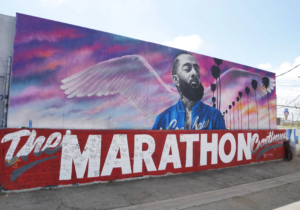
Across the country in California, in 2011, the Los Angeles Police Department Launched Operation Laser (an acronym for Los Angeles Strategic Extraction and Restoration), a program designed to use artificial intelligence to create a program to target “chronic offenders” through predictive policing technology. Reporter Michael Safi, writing for The Guardian, spoke about what he learned while research was being conducted around rumors that the LAPD and Operation Laser were profiling Nipsey Hussle’s Marathon clothing store. “Nipsey and his family and friends all had frequent contact with the LAPD. The LAPD had a lot of interest in Nipsey and his business efforts from the very start,” said Safi. At Nipsey’s funeral, his brother and business partner Samiel Asghedom spoke about the hurdles they had to face in purchasing the pavilion where Marathon is located, including the LAPD pressuring the landlord of the plaza to evict them. While it’s unclear the extent to which the Marathon store in Crenshaw was targeted by the LAPD, Nipsey and his supporters were vocal about the harassment and the community organized. As a matter of fact, it seems that the police pressure on the landlord to evict the Marathon clothing store was the catalyst that led him to offer to sell to Nipsey and his partners. In 2019, the same year as Nipsey Hussle’s death, the LAPD ended the Laser program amid intense public outcry.
Notice the theme here. The South Bronx was facing some big challenges as a community. Hip Hop was born, spread across the city, then around the world bringing new income and resources into the neighborhoods it sprung from. Some of the same political forces that had contributed to or even created the conditions in the Bronx, presented barriers to Hip Hop’s advancement. Artists and activists resisted and persisted. Along the way, those values that the early organizers in the culture sought to preserve grew and matured, and Hip Hop continued to evolve. Hip Hop wasn’t handed its modern image of establishment legitimacy. It fought for its status and its platform to share its wisdom with people around the world. It didn’t ask for middle America to acknowledge its worth. Before it was a product of mass appeal, it did what it did for the block it lived on. And today, decades after its birth, it still combats adverse forces, but it also lives in a world that understands it a little better.
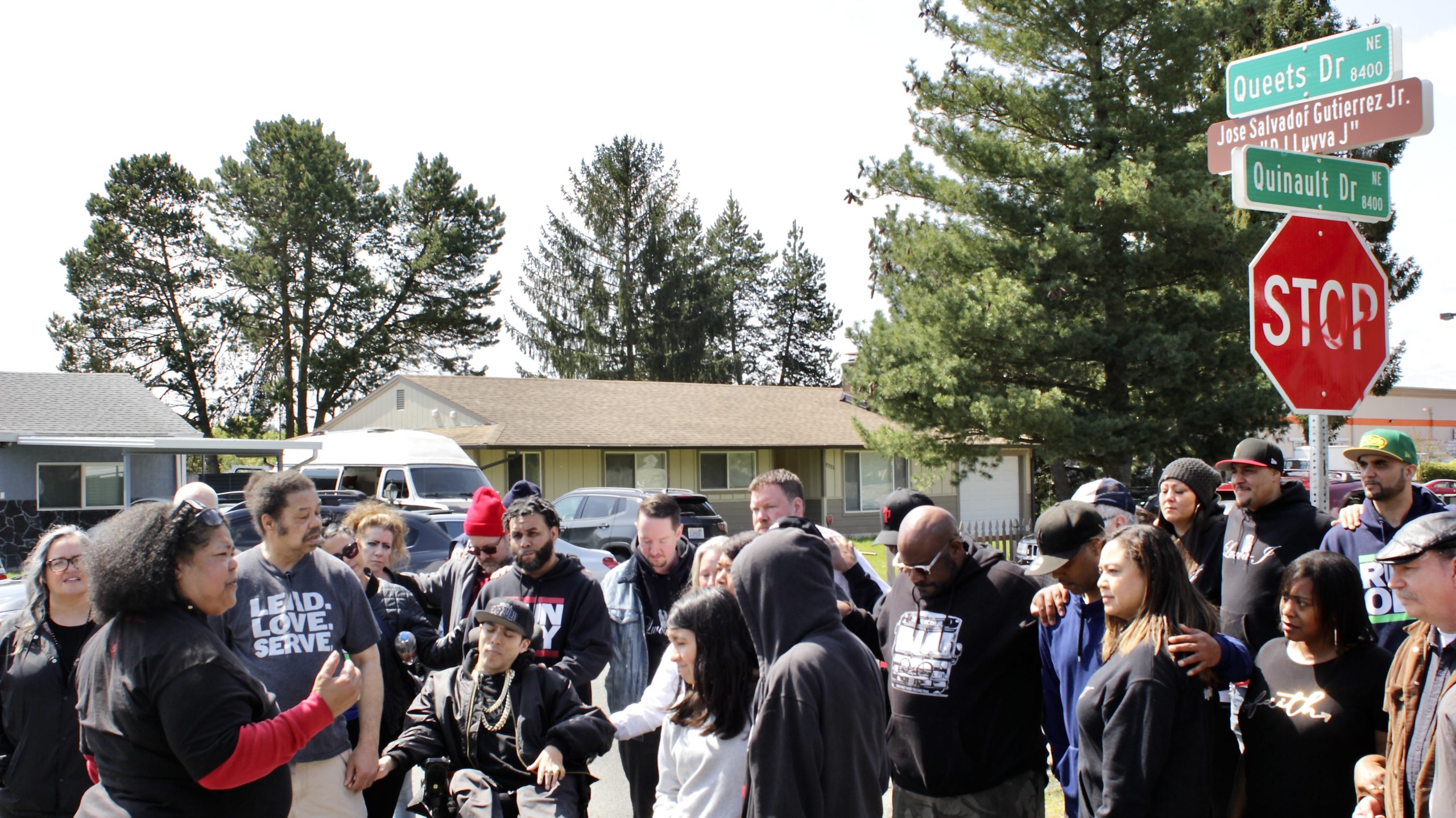
When asked why Mayor Ryder put so much work into erecting a street sign for a man like Luvva J, a man who spoke Hip Hop in everything he stood for, the Mayor answered without hesitation, “You know music for me has always been something that brings people together on the basic human level. There’s very few things that do that. When you are listening to Hip Hop, everything else sort of goes away. You’re listening to something bigger than yourself. Jose knew that. Jose understood what music could do to bring people together and he did that very, very well.”
It’s true. Jose Gutierrez was a bridge and anyone who knew him knew that he believed that the greatest power of Hip Hop was to unify people. He also knew that the music, the visual arts, the economic force, and the knowledge carried by a culture like Hip Hop have so much power for transforming a troubled world. Basquiat knew that. Nipsey Hussle knew it. So many people from the sphere of Hip Hop and beyond are aware of that power and work tirelessly, as Luvva J did, to manifest it.
A proclamation and a street sign don’t solve the problems that communities throughout the United States and around the world face as their leaders pursue justice and liberty. They can give us an opportunity to pause, however, and reflect on the journey that we’ve been on. We can take the lessons from a life like DJ Luvva J’s, put them next to the story of Hip Hop and take a moment to remember our fallen, to assess our progress, and to reaffirm the work still left to be done. In Hip Hop History Month in November, the children of the culture will remember this story and celebrate the complex struggle within Hip Hop’s voyage thus far and hopefully, whenever one of those children drive through the City of Lacey and look over to see the sign below Queets Drive that reads “Jose Salvador Gutierrez Jr. ‘DJ Luvva J,’” they’ll pause and reflect, remembering how far we’ve come and how far we have yet to go.
RELATED ARTICLES
Love Peddler: Remembering Luvva J
Celebrating the Life & Legacy of DJ Luvva J
City of Lacey Proclaims DJ Luvva J Day
DJ Luvva J Tribute (Slideshow)
DJ Luvva J Tribute (Video)
